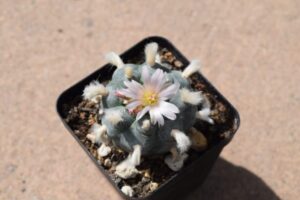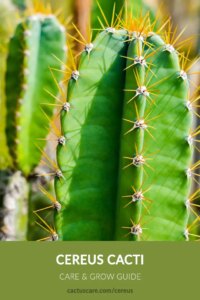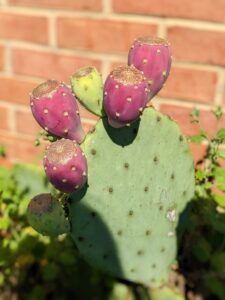Christmas Cactus and Low Temperatures: What You Should Know
Christmas Cactus, or Schlumbergera, thrives during the holiday season, bringing joy with its vibrant blooms. However, it is essential to understand how this unique succulent interacts with seasonal temperature variations. The interplay between low temperatures and the wellbeing of your Christmas Cactus is intriguing and multifaceted, giving insight into the plant’s specific needs during winter months.
While many are accustomed to conventional houseplants requiring warmth, the Christmas Cactus has adapted to tolerate cooler climates. This unique trait is a fascinating aspect of its biology, as it demonstrates resilience and adaptability. Nevertheless, the nuances of temperature regulation cannot be overlooked, as they have a pronounced impact on growth patterns and overall health.
Understanding the geographical origins of the Christmas Cactus helps clarify its temperature preferences. Native to the tropical rainforests of Brazil, this plant flourishes in environments where daytime temperatures can oscillate, but it generally favors warmer conditions. Still, it can withstand a considerable temperature drop, which can trigger its remarkable flowering cycle. This characteristic is rooted in its evolutionary journey, where fluctuating temperatures led to adaptations that allow the plant to thrive in diverse environments.
As winter approaches and temperatures begin to plummet, the essential question arises: How low can this plant go? The ideal environment for a Christmas Cactus is one that resembles its native habitat, where temperatures hover around 60-70°F (15-21°C) during the day and can dip lower at night. An interesting observation is that these cacti can tolerate temperatures as low as 50°F (10°C) without significant damage. However, exposure to extended periods of cold temperatures—especially anything below this threshold—can lead to detrimental effects.
One of the primary risks of exposing a Christmas Cactus to low temperatures is the onset of root rot. Cold soil temperatures can impede the plant’s ability to absorb nutrients effectively, leading to a decline in overall health. The plant’s delicate balance of water retention and nutrient intake is disrupted, shifting its growth patterns toward stress responses. Thus, while lower temperatures can stimulate flowering, they can equally impair the health of the plant if unmonitored.
Recognizing the signs that your Christmas Cactus is experiencing cold stress can be critical for intervention. The plant may exhibit wilting leaves, discoloration, or elongated growth, indicating that it is struggling to adapt to unfavorable conditions. Moreover, under-watering becomes a prevalent concern. In colder climates, the evaporation rate is significantly reduced, leading caretakers to misjudge the necessary moisture levels. This misunderstanding can result in desiccation, thus compounding the effects of chilling temperatures on the plant.
The role of humidity in conjunction with low temperatures is also significant. Christmas Cacti typically thrive in high humidity, which is reminiscent of their rainforest origins. When temperatures drop, humidity levels can drop as well, resulting in a harsh environment that the plant may not endure. Ensuring adequate humidity levels through regular misting or pebble trays can help create a more hospitable environment, allowing the plant to maintain hydration even in cooler conditions.
In addition to temperature and humidity, light exposure is another critical factor influencing the health of a Christmas Cactus during winter months. As the days grow shorter and light becomes scarce, the plant enters a period of dormancy. This phase is crucial for its flowering process. To optimize blooming, it is recommended to place the cactus in an area with indirect sunlight or utilize supplementary artificial light, thus simulating the longer days of its native habitat.
Pest infestations can also become exacerbated by low temperatures, as your Christmas Cactus becomes increasingly vulnerable while under stress. Common pests such as mealybugs and aphids thrive on weakened plants, leading to further complications. Regular inspections and proper preventative measures can ward off these unwelcome guests and keep your plant thriving throughout the season.
Understanding the science behind the Christmas Cactus’s needs sheds light on how to care for this remarkable plant effectively. Correctly managing exposure to low temperatures, ensuring adequate humidity, and providing sufficient light will create optimal conditions that facilitate blooming. As such, the Christmas Cactus stands as a testament to nature’s resilience and adaptability in various environments and weather conditions.
To sum up, the relationship between the Christmas Cactus and low temperatures is a multi-layered phenomenon deeply rooted in the plant’s biology and environmental adaptations. With the right care and understanding, you can foster a thriving Christmas Cactus that enhances your holiday spirit, all while marveling at its unique botanical resilience. As you nurture your plant through the winter months, embrace the opportunity to explore the deeper connections that bind the organism to its environment. Ultimately, the dance between temperature and vitality invites a celebration of nature’s greater intricacies, ensuring that your Christmas Cactus remains a cherished centerpiece during the holiday season.




Leave a Comment